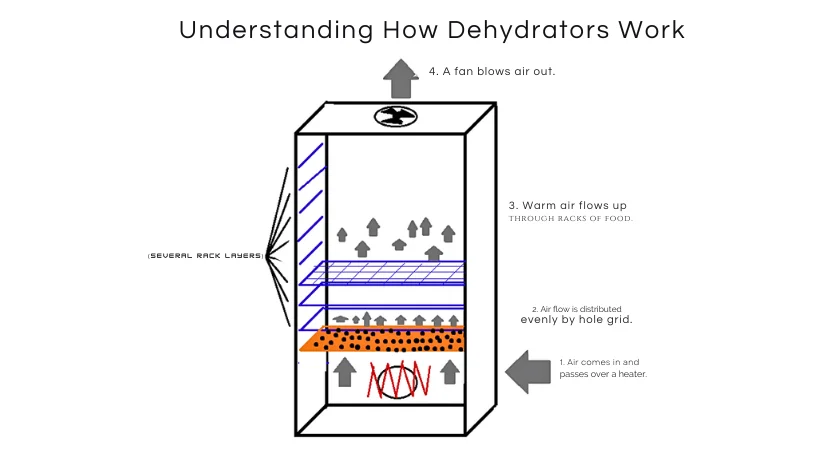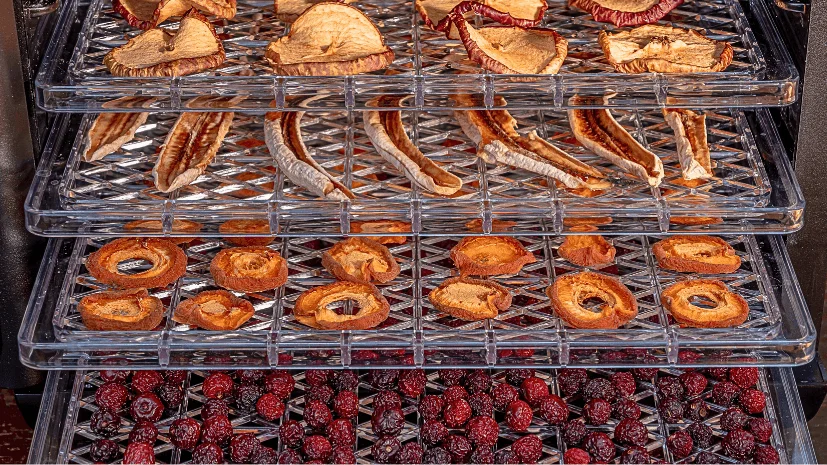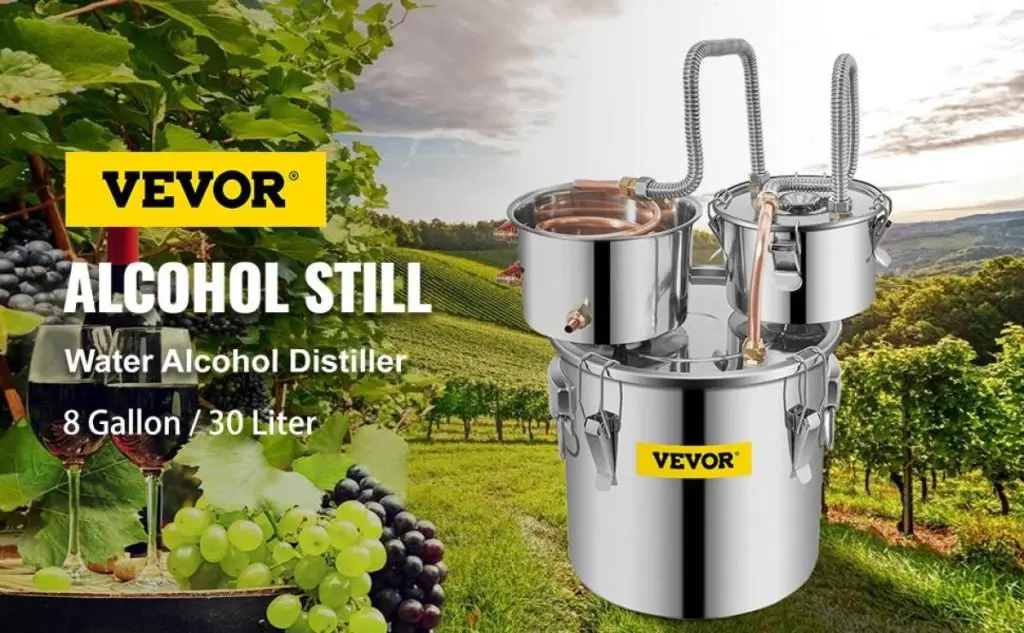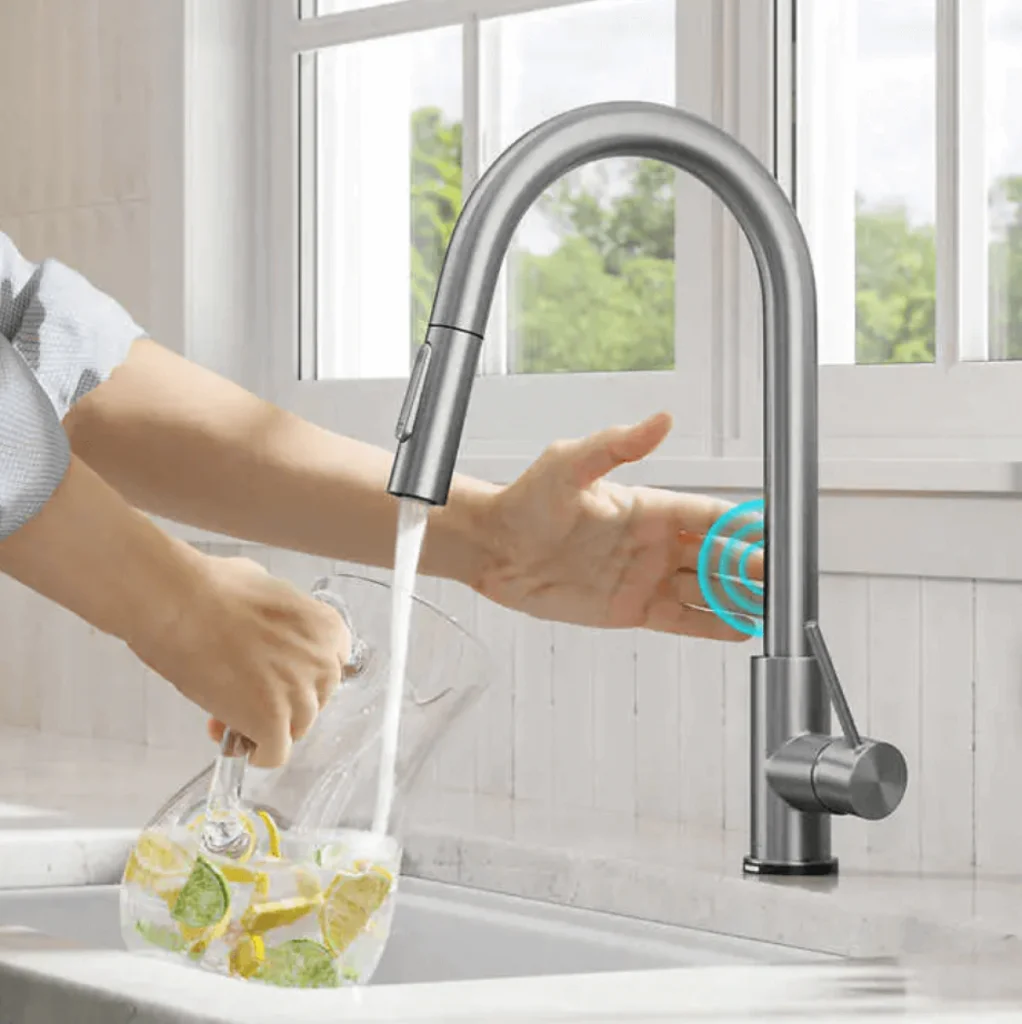In an era where scrumptious food dances on the brink of extinction and freshness dwindles, food preservation is a culinary lifesaver, a blending of aromas stored in jars, an eternal dance of flavors.
Set your temperature through the unique control panel with a VEVOR electric food dehydrator that allows you to set the timer between 5 and 48 hours. This jerky machine is FDA-certified and built with 201 stainless steel.
But do dehydrators use a lot of electricity? With a dehydrator machine, your food turns out to be super delicious without using a lot of electricity. Explore how to preserve nature’s bounty with an electric food dehydrator machine and create delectable dishes that entice the senses and last forever.

Table of contents
Understanding How Dehydrators Work
A food dehydrator is a kitchen tool built to remove moisture from the food and prevent mold and bacteria from growing on it. The main mechanism of a food dehydrator is to manage heat and airflow to efficiently remove moisture from the different kinds of foods.
Do dehydrators use a lot of electricity? Through circulating warm air, these food dehydrators blow out enough hot air to dry the food without cooking it. You can make thin slices of your favorite food and place them on the drying racks. Below’s the process:
- Airflow system: These dehydrators circulate warm air throughout the devi through a fan and airflow system. This circulation is essential to dry the food.
- Elements for heating: Dehydrator heating elements are equipped at the bottom or top of the unit. Through this element, low and constant levels of heat are produced.
- Controlling temperature: You can set the temperature based on the type of your food. Different foods require different temperatures for drying and maintaining their quality.
- Evaporator: Warm air allows the food to evaporate the moisture from it through circulation. The food dehydrators expelled moisture into vapors.
- Food tray: Dehydrator food trays are made of material that passes the air through circulation when you place the food on the trays. Warm air passes over the food as these trays are stacked in the dehydrator.
- Dryness time: Depending on your food, it takes time to dry due to its water content. So it may take a few hours to a day.
The Average Electricity Usage of Dehydrators
Now the question is, do dehydrators use a lot of electricity? Many people think that a food dryer runs constantly and uses a lot of electricity. However, the truth is something else, as food dryers only consume 1kW /hr. So, they usually run 740hrs per month. Additionally, using the food dehydrator is cheaper than using a stove.
Energy efficiency is produced through the circulated air from a fan and heating element responsible for warming the air. Do food dehydrators use a lot of electricity? No, not all food dehydrators consume a lot of electricity. You can compare them by their wattage ratings. A thousand-watt is the same as a 1KW. Your electrical bills can be determined by the electricity used per KWh. For example, the average rate of electricity is 13 cents per kWh. So, the 1000 KW food dehydrator will cost you 13 cents per hour, and the 750 watts will cost you 9.7 cents per hour, 500 watts will be 6.5, and 300 watts will cost you 3.9 cents per hour, respectively.
Comparing different kitchen appliances to see if dehydrators consume a lot of electricity will reveal that ovens are less energy efficient because they’re designed to dehydrate food. On the other hand, microwaves are efficient for reheating and lack dehydration functionality. However, cookers and toasters are specialized for small tasks but are not designed for dehydration purposes. When it comes to preserving food through dehydration, food dehydrators play an integral role and are a dedicated solution for tempting food.

Factors Affecting a Dehydrator’s Electricity Consumption
Do food dehydrators use a lot of electricity? Different factors can influence food dehydration energy consumption and depend upon overall energy usage. There are a few things that affect how much energy food dehydrators use and explain whether or not food dehydrators use a lot of electricity:
Size and Capacity
If you’re assuming to use food dehydrators for large quantities of food, consider the dehydrators with several trays with high capacity to dry food in larger batches. This is convenient for batch processing but may result in higher energy consumption. Go for a dehydrator that matches your food batch size.
Power
The dehydrator power rating can be measured in watts. High-voltage dehydrators can consume more energy. Understanding the dehydrator for your needs and the appropriate wattage is vital.
Drying Time
The energy efficiency depends upon the dehydrator’s running time. Determine whether longer drying time results in higher energy efficiency. Usually, it depends upon the quantity and type of food you want to process, which can help minimize energy consumption.
Controlling the Thermostat
Food dehydrators are equipped with a thermostat-controlling system that allows you to set a specific temperature depending on your food type. Proper temperature control impacts quality but also ensures the efficiency of dehydrators to use the appropriate amount of energy.
Insulate and Ventilate
The design features of dehydrators, such as insulators and ventilators, can impact energy efficiency. In a well-insulated dehydrator, retaining heat can be better while requiring less input power.
Airflow System
For drying the food, efficient airflow is essential. Well-designed dehydrators and ventilation can evenly distribute the energy while reducing the overall drying time, thus energy use.
Eco-Friendly Features
With the auto-shut-off system and energy-saving features, some food dehydrators are in demand now. Through the timer, users can set the specific duration for drying the food and prevent unnecessary energy usage. Once the desired time is reached, the auto-shut-off system turns off the dehydrator, enhancing energy efficiency.
Usage
The frequency of use of the dehydrator also affects energy consumption, and higher bills may be considered during regular usage. So adjust usage accordingly while considering your dehydrating needs.

Get 360° air circulation and 800 W drying power with the VEVOR beef jerky machine. A rear-mounted drying fan allows your food to dry evenly. Locks the original flavors of your favorite food without spinning. Making the most out of a food dehydrator guarantees top-notch food preservation and saves you a lot on your electricity bills. Your dream kitchen becomes a reality by selecting the best dehydrators with the appropriate wattage, size, and batch requirements and benefitting from smart features like thermostats and timers.
Maximizing Efficiency: Tips for Reducing Electricity Usage
Do dehydrators use a lot of electricity, and how can you reduce the electricity usage while using dehydrators? To make your food dehydrator work more brilliantly, let’s dig into some savvy tricks to get your food dehydrator to work smarter, not harder. First, think about grouping similar food items while loading the trays. This nifty move ensures a consistent temperature for the whole batch, making things efficient.
Dehydrate your goodies uniformly after preparing them. It looks like a small thing, but it’ll ensure you dry up the food evenly and reduce excessive energy usage. So, what’s next? A batch processing multiple batches will minimize dehydrator heating and save you electricity and time.

When considering the temperature, it’s not a good idea to set it and walk away. You can tweak the heat as you go; start higher and then lower it for the end. Grab the timer if your food dehydrator does not have a built-in timer feature to avoid overdoing and wasting energy.
For extra eco-friendliness…why not set your food dehydrator under sunshine and let nature do the work? Doing regular maintenance by cleaning the vents and fans to keep your machine in tip-top shape. A well-kept dehydrator is energy-efficient, providing crispy snacks and low electricity bills.
Practical Usage Scenarios and Their Impact on Electricity Bills
The usage of food dehydrators impacts overall usage and energy-saving options. Let’s explore some scenarios and their impact on electricity bills and learn how dehydrators use electricity.
1. Frequently Smaller Batches
Scenario: Assume you use the food dehydrator in small batches, no matter if you’re drying herbs, making occasional snacks, or preserving seasonal fruits in small amounts. Small batches will not use any significant amount of electricity, but frequent usage can still increase the bills.
Impact: Small batches will not use any significant amount of electricity, but frequent usage can still increase bills over time.
2. Batch Processing Over the Weekend
Scenario: Over the weekends, you like to process all your dehydrating fruits and vegetables tasks in large batches.
Impact: It’s an energy-efficient approach as you don’t need to heat the food dehydrator multiple times. Though each session may be a bit longer, it can lower your electricity bill compared to the small batches.
3. Seasonal dehydration
Scenario: If the harvest season is in full swing, you would prefer to do dehydration seasonally because vegetables and fruits are abundant, and preserving them for later use is necessary.
Impact: Seasonal activity lowers the frequency of operation, resulting in lower electricity bills when not in use. At that time, do dehydrators use a lot of electricity? However, electricity consumption may be higher when processing larger quantities.
4. Usage for Commercial Purposes
Scenario: For your small business, you sell dehydrated food and need to operate dehydration continuously. Choose an energy-efficient dehydrator and adopt batch process strategies; controlling temperature and maintenance become crucial.
Impact: Continuous usage can increase energy bills. Choose an energy-efficient dehydrator and adopt batch process strategies to mitigate the cost. Controlling temperature and maintenance become crucial parts.
5. Implementation of energy-saving features
Scenario: On your food dehydrator, you can utilize energy-saving features such as temperature controls, timers, and automatic shut-off functions.
Impact: By implementing energy efficiency features, you can reduce electricity bills and operate the dehydrator only when there’s a need. For example, the timer will allow you to reduce unnecessary power consumption.
Conclusion
Several factors depend on the dehydrator’s electricity usage, such as usage frequency, wattage, batch processing, etc. Regarding the concern “Do dehydrators use a lot of electricity?” it’s essential to pick a durable and energy-efficient option. Using efficient strategies like batch processing and temperature optimization can make a big difference. Consider VEVOR’s top-tier food dehydrator as your ultimate food preservation solution, featuring an energy-efficient solution.
Relish the taste of savings while preserving your favorite goodies with optimal energy savings!




